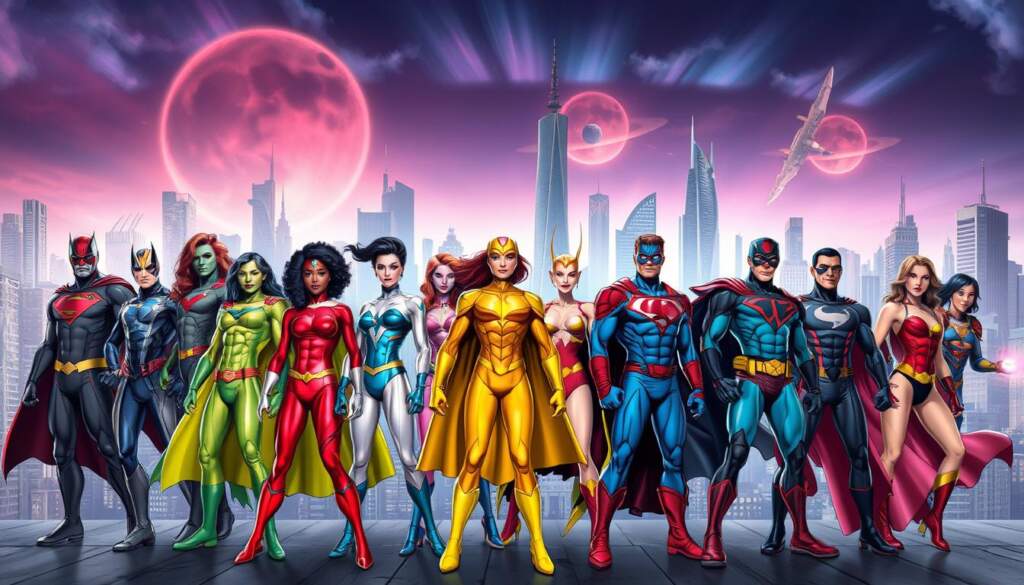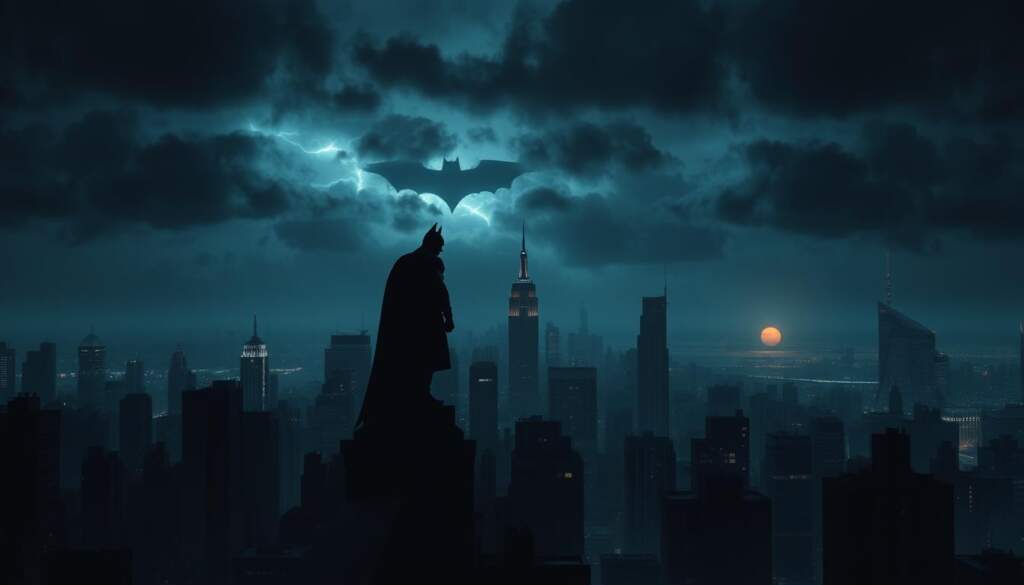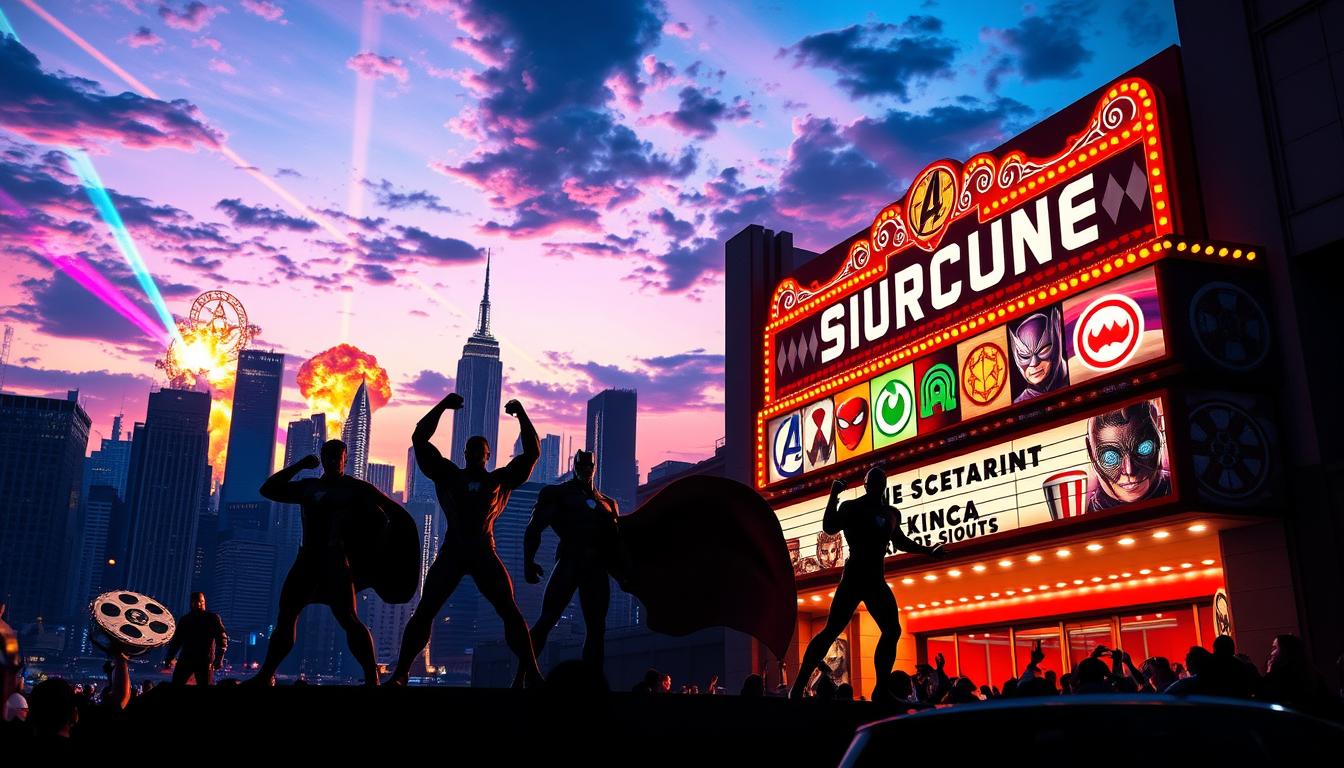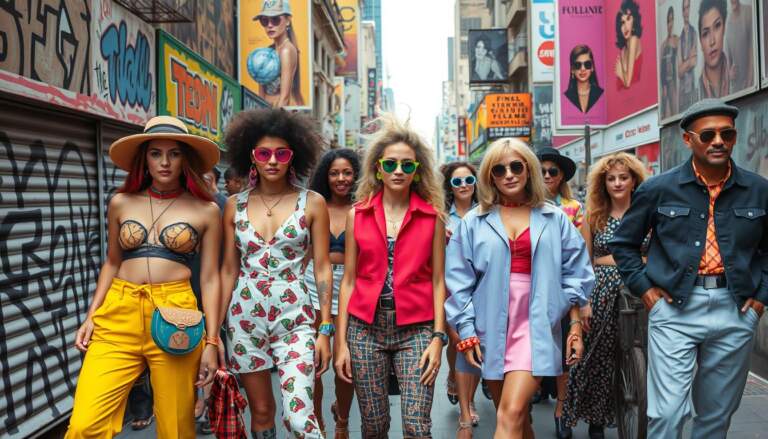The cinematic superhero journey has taken flight dramatically in the past ten years, marking a seismic shift from humble beginnings to the blockbuster spectacles that grace our screens today. In these critical years of superhero cinema transformation, we’ve witnessed the genre’s pulse intensify with Richard Donner’s “Superman: The Movie” igniting the blaze back in the late seventies12. Tim Burton’s iconic “Batman” brought a new level of depth and darkness to superhero lore, enchanting a wider audience of both youth and adult12. As the millennium turned, the likes of Bryan Singer’s “X-Men” and Sam Raimi’s “Spider-Man” refined the narrative with complex characters and themes, paving the way for the cultural phenomenons that define today’s superhero cinema: the Marvel Cinematic Universe (MCU) beginning with “Iron Man” and the DC Extended Universe (DCEU) with “Man of Steel” and “Batman v Superman: Dawn of Justice”12.
Celebrating diversity has become a cornerstone as films like “Black Panther” and “Wonder Woman” shattered ceilings, creating not just movies but movements, as they resonate deeply with global audiences12. With every CGI-enhanced scene, superhero movies have expanded their horizons, presenting not just thrilling action but also rich, inclusive storylines that reflect the world around us. Technological prowess in visual effects has enabled this evolution, leading to the creation of other-worldly yet tangible experiences in astonishingly realistic superhero worlds2.
Key Takeaways
- The late ’70s marked the birth of the superhero genre with “Superman: The Movie”
- Tim Burton’s “Batman” films introduced a darker, more appealing take on superhero storytelling
- The early 2000s brought complex characters to the genre through “X-Men” and “Spider-Man”
- The MCU and DCEU elevated interconnection and breadth in superhero cinema
- Diversity and representation have become integral, exemplified by films like “Wonder Woman” and “Black Panther”
- Advancements in CGI have sculpted the visually stunning spectacles in superhero movies
Redefining the Genre: The Unprecedented Rise of MCU and DCEU
The Marvel Cinematic Universe (MCU) and the DC Extended Universe (DCEU) have reshaped the landscape of cinema, demonstrating the immense power of interconnected storylines and meticulous character development in crafting expansive movie universes. The impact of these franchises on box office revenues and the superhero genre is undeniable.
Since 2008, the inception of the MCU with “Iron Man,” the franchise has experienced colossal financial success, accumulating over $28 billion in global box office earnings3. This staggering figure not only highlights the Marvel Cinematic Universe impact but also underscores an era of unparalleled advancements in the superhero genre. Similarly, the DCEU, initiated by “Man of Steel,” has carved its niche with a darker tone and deconstructed heroes, offering a contrasting yet equally compelling narrative approach.
These cinematic universes have not only led to billions in revenue but have also set new benchmarks for the superhero movie genre43. The formula of interconnected storylines—where each film enriches a larger narrative arc—has contributed significantly to their success. Such a structure has paved the way for ensemble blockbusters like “The Avengers” and “Justice League,” which unites various characters for a collective showdown, enhancing both character arcs and overall universe continuity.
In terms of character development, standout films like “Black Panther” and “Wonder Woman” have done more than entertain—they’ve broken barriers regarding representation and diversity in superhero cinema. “Black Panther,” as an example, not only generated substantial box office success but also became a cultural phenomenon, celebrating African heritage within the framework of a superhero narrative5.
The DC Extended Universe, while facing initial hurdles, found substantial acclaim with “Wonder Woman,” a film that brilliantly merged themes of war, peace, and empowerment5. This movie, together with its MCU counterparts, underscores the vital role these universes play in setting new trends for character portrayal and storytelling.
In conclusion, both the Marvel Cinematic Universe and the DC Extended Universe are more than just collections of superhero films; they are dynamic, transformative forces in modern cinema. Their ability to weave intricate stories with well-rounded characters across multiple films is not just innovative; it has set a new standard for cinematic storytelling, influencing countless other franchises and filmmakers around the world.
Technological Advancements: The Spectacular Visuals in Superhero Cinema
The definitive cinematic experiences we enjoy in today’s superhero films are largely attributed to rapid technological advancements, particularly in CGI evolution and VFX advancements. These technologies have not only redefined what is possible on the screen but have also elevated the storytelling to new heights, making every battle scene more thrilling and every superhero more lifelike.
Breaking Barriers with CGI: From Iron Man to Avengers
Since its advent, CGI has continuously pushed the boundaries of realism in superhero cinema. The release of “Iron Man” in 2008 marked a significant milestone in CGI evolution, showcasing a blend of real-world special effects and cutting-edge computer-generated imagery that allowed for an immersive viewing experience6. This technology has advanced substantially, reaching its zenith in “Avengers: Endgame,” where it seamlessly integrated live-action footage with spectacular VFX to craft compelling narratives and breathtaking visuals that captivated global audiences6.
The Impact of VFX: Building Superhero Worlds
VFX advancements have opened up limitless possibilities in cinematic world-building. They enable the creation of vast, detailed universes that heroes like Spider-Man and Thor inhabit—worlds that viewers could once only imagine. Today, thanks to sophisticated superhero visual effects, filmmakers can effectively translate the fantastical elements of comic books into the dynamic, three-dimensional worlds that moviegoers appreciate7. Moreover, these effects play a crucial role in enhancing superhero costumes, making them look not only realistic but also functionally plausible in the high-stakes scenarios our beloved characters often find themselves in.
In conclusion, the interplay of CGI evolution, superhero visual effects, and real-world special effects continues to drive the popularity and success of superhero films, turning them from simple comic book adaptations to multi-sensory, blockbuster experiences. Each technological stride enhances the novelty and appeal of these films, confirming that the best of superhero cinema is yet to come.
The Evolution of Superhero Movies in the Last Decade
The last ten years have dramatically transformed the landscape of superhero cinema, from solo superhero films to massive superhero ensemble cast productions that dominate the box office. The evolution has not only changed how stories are told but also how they are received worldwide8.


Starting with solo outings that often focused on a single character’s origin, the industry has seen a shift towards crossovers and narrative expansion, creating complex tapestries of interconnected stories that appeal to a diverse audience across generations8. This has opened up possibilities for cinematic universe spin-offs and extensive world-building, providing depth and continuity across films and different media platforms9.
From Solo Outings to Ensemble Blockbusters
The introduction of films like “The Avengers” and the assembly of Marvel’s superhero ensemble cast has set a new benchmark in the genre. By merging multiple storylines into a single narrative, these blockbusters have not only increased the stakes but also the box office potential, changing the way superhero films are perceived and expected to perform9.
Sequels, Prequels, and Spin-Offs: Expanding the Universe
Further driving the trend of narrative expansion are the superhero sequels and prequels that deepen the backstory and develop the character arcs over multiple films8. For example, “The Dark Knight”, which not only received acclaim but also significantly influenced the genre with its dark tone and complex protagonist, showcased how sequels can transform cinematic narratives. This trend has encouraged studios to explore cinematic universe spin-offs, providing fresh perspectives and storytelling opportunities within established realms9.
In summary, the last decade has redefined the superhero genre from individual solo superhero films to expansive superhero ensemble casts and universes filled with crossovers and superhero sequels. This evolution reflects both a change in audience preferences and advancements in film-making technology, ensuring that the allure of superheroes continues to grow in our global cultural landscape89.
The Dark Knight Rises: The Resurgence of Brooding Superheroes
The unprecedented success of “The Dark Knight Rises” reshaped the landscape of superhero cinema, heralding the rise of the brooding superhero trend. This chapter in the Batman saga not only captivated audiences but also set a high benchmark in serious superhero storytelling. Its impact was profound, influencing an array of films that sought to emulate its dark, complex narrative and morally ambiguous characters.
At the core of this shift was the Dark Knight impact, a phenomenon that saw the superhero genre morph into a canvas for deeper psychological exploration and social commentary. This trend was not just confined to film but spanned various media as the Batman franchise itself expanded across comics, novels, and even animated series, continually evolving to reflect contemporary issues10.


Amid this resurgence, the demand for more nuanced superhero narratives grew, echoing the broader brooding superhero trend that “The Dark Knight Rises” epitomized. The film’s exploration of themes such as chaos, justice, and redemption resonated deeply, pushing other studios to adopt a similar gravitas in their own superhero projects11.
Moreover, this serious superhero storytelling approach has not been without its critics. Some argue that while films like “Man of Steel” attempted to adopt the darker tone pioneered by Nolan’s Batman, they sometimes sacrificed coherent story arcs and character development in favor of visual spectacle11.
“The Dark Knight Rises stands not only as a monumental conclusion to Nolan’s trilogy but also as a catalyst for the dark, intricate tales that followed in its wake, setting the stage for a relentless pursuit of depth in superhero cinema.”
The influence of Batman’s gritty adaptation reached beyond the big screen, reflecting a broader cultural shift towards more serious, complex superhero narratives. This is evident in the voluminous issues and story arcs explored in the Batman comics, which have significantly influenced the narrative depth and stylistic choices in modern superhero films10.
| Aspect | Influence | Examples |
|---|---|---|
| Brooding Hero Archetype | Strengthened the trend for more complex characters | Batman in “The Dark Knight Rises” |
| Visual Style | Greater emphasis on darker, more atmospheric cinematography | Zack Snyder’s approach in “Man of Steel” |
| Storytelling | Shift towards deeper, more introspective narratives | Themes of heroism and sacrifice in “The Dark Knight Rises” |
As we navigate the future of superhero films, watching how directors, like those mentioned in our privacy policy details, continue to draw inspiration from the brooding superhero trend, it remains clear that the influence of “The Dark Knight Rises” will endure, continually pushing the genre towards new horizons of storytelling complexity and character depth10.
Embracing Diversity: Representation and Inclusivity in Superhero Films
The evolution of the superhero genre has seen a significant shift towards inclusivity and diversity, pushing beyond traditional boundaries to embrace a global audience. This transformation is not just a trend but a reflection of societal changes, where diverse superheroes and inclusive casting have become pivotal.
Breaking the Mold: The Success of Black Panther and Wonder Woman
“Black Panther” and “Wonder Woman” have broken records and barriers, showcasing the power of women in superhero movies and the importance of multiethnic representation. “Wonder Woman,” directed by Patty Jenkins in 2017, stood out as a beacon of empowerment, marking a historical moment as the first major female-led superhero film12. Meanwhile, “Black Panther” became a cultural milestone with its predominantly Black cast, celebrating African culture and diversity. The film not only elevated the standard for diverse superhero casts but also affirmed that inclusivity can drive commercial success12.
Beyond the Binary: Gender Fluidity and Multiethnic Casts
The superhero narrative has evolved to include gender fluid characters and stories that resonate with diverse audiences. Multiethnic representation in superhero films offers a richer, more varied tapestry of stories and characters, reflecting a world where all viewers can see themselves as heroes. The integration of diverse superheroes in recent films is not merely a consequence of changing norms but a proactive effort to engage and reflect an interconnected world.
The call for gender fluid characters and increased diversity is echoed throughout the industry and amongst audiences who seek to connect with characters that mirror their reality. This evolution within the superhero genre is a powerful testament to the ongoing cultural shifts in media representation, urging a more inclusive future in entertainment13.
In conclusion, the superhero genre continues to break new ground by incorporating diverse superheroes, gender fluid characters, and multiethnic casts. As these films reflect more diverse perspectives, they contribute significantly to the narrative of inclusivity, resonating with audiences worldwide and reshaping the landscape of superhero cinema.
The Anti-Hero Phenomenon: Redefining Heroism in Cinema
The rise of the anti-hero in superhero films has significantly impacted the superhero film evolution, creating a new wave of complex protagonists who blur traditional lines of morality. Unlike the quintessential heroes who embody clear-cut values of good, these characters present a more nuanced perspective that is increasingly resonating with contemporary audiences.
This shift towards embracing flaw and conflict within central characters reflects a broader cultural trend towards more intricate and morally ambiguous narratives. The anti-hero trend not only enriches the genre but also mirrors societal complexities, where the notions of right and wrong are often not black and white.
An example of this trend can be seen in recent box office successes that highlight anti-heroes at their core. These films showcase complex protagonists who operate in a world where the ethical landscape is intricate and multi-dimensional. Such characters often grapple with personal demons or societal issues, providing a relatable and profound human experience that challenges the traditional superhero narrative.
- The evolution from idealized heroes to complex protagonists showcases a significant shift in narrative focus, reflecting broader social changes and a deeper exploration of character and motivation in storytelling.
- Superhero films are not just about spectacular powers but now delve into the psychological and ethical complexities faced by their protagonists. This approach seems to resonate more profoundly with audiences, leading to successful franchises and spin-offs.
This narrative evolution has been supported by advancements in film technology that allow for more nuanced storytelling and complex character development14. The superhero genre’s adaptation to include these deeper, more textured story arcs can be seen as a reflection of audience demand for stories that both entertain and provoke thought.
Ultimately, the allure of the anti-hero in superhero cinema challenges viewers to reflect on the real implications of heroism, pushing the genre to explore new directions and remain relevant in today’s rapidly changing cultural landscape.
Conclusion
The landscape of superhero films has dramatically changed in the past decade, leaving an undeniable mark on contemporary cinema. The early 2000s set the stage with the debut of groundbreaking films from the “X-Men”1516 and “Spider-Man”1516 series, forging the path for others to emerge. As the Marvel Cinematic Universe (MCU) took off with “Iron Man” in 2008151716, it established a new norm in narrative interconnectivity that culminated with the record-breaking success of “The Avengers”151716 and its sequels, further sculpting the superhero film legacy. Meanwhile, the DC Extended Universe (DCEU) began charting its own course with “Man of Steel” and found box office victories with “Wonder Woman” and “Aquaman”15 which broadened the genre’s scope.
Embracing diversity, superhero cinema has increasingly celebrated various narratives with “Black Panther” and “Captain Marvel”1517 setting new standards not only for inclusivity but for box office success. This reflects the audience’s demand for multifaceted representation – from the societal and cultural triumph of “Black Panther”17 to the integration of Asian and LGBTQ+ stories with “Shang-Chi and the Legend of the Ten Rings” and “Eternals”17. The advancements in CGI technologies have greatly enabled the creation of visually-incredible worlds, bringing the fantastic locales and action-packed sequences of movies like “Guardians of the Galaxy” to life15. All this contributes to an evolving genre that consistently captivates audiences through stunning visuals and compelling storytelling.
As we look to the future of superhero movies, it appears bright with diverse stories poised to elevate the genre to new heights. Films such as “Guardians of the Galaxy Vol. 3” and “Black Panther: Wakanda Forever”16 continue to generate buzz, showcasing that as long as creativity and innovativeness persist, superhero films will remain a substantial and beloved component of global cinema. Collaborations like Deadpool’s with Wolverine signal not only a nod to the legacy but a bold step forward into a new chapter of superhero storytelling16. The promise of the future, where innovation meets inspiration, ensures that the superhero film legacy remains dynamic and central to the narrative landscape of the 21st century.
FAQ
How has superhero cinema transformed in the last decade?
What impact has the Marvel Cinematic Universe had on the superhero genre?
How have technological advancements like CGI and VFX changed superhero movies?
What has been the role of solo and ensemble films in the evolution of superhero cinema?
How did The Dark Knight Rises contribute to the superhero genre?
What strides have been made towards diversity and inclusivity in superhero movies?
How has the anti-hero phenomenon redefined heroism in superhero cinema?
How do modern superhero films compare to their predecessors?
Source Links
- The Evolution of Superhero Movies: From Comic Panels to Blockbuster Epics – https://medium.com/@karr0616/the-evolution-of-superhero-movies-from-comic-panels-to-blockbuster-epics-feb43820db35
- From Comics to Blockbusters: Exploring the Evolution of Superhero Movies – https://www.ask.com/tv-movies/comics-blockbusters-exploring-evolution-superhero-movies
- Superhero film – https://en.wikipedia.org/wiki/Superhero_film
- The Evolution of Superhero Movies: From Comics to Blockbusters | Movies & TV Shows – https://www.landofgeek.com/posts/evolution-of-superhero-movies
- The State of the Superhero Movie: Are We in a Golden Age? – https://vocal.media/fyi/the-state-of-the-superhero-movie-are-we-in-a-golden-age
- The history and evolution of the superhero movie genre – https://spartanshield.org/29765/arts-entertainment/the-history-and-evolution-of-the-superhero-movie-genre/
- Superhero Popularity in Past and Present America – https://pitjournal.unc.edu/2023/01/06/superhero-popularity-in-past-and-present-america/
- The Rise of Superhero Films – https://www.nyfa.edu/student-resources/the-rise-of-superhero-films/
- The Evolution of the Superhero Film – https://www.gregtodiffer.com/the-evolution-of-the-superhero-film/
- Static, Yet Fluctuating: The Evolution of Batman and His Audiences – https://scholarworks.gsu.edu/cgi/viewcontent.cgi?article=1072&context=english_theses
- The Dark Knight Rises – I Like Things That Look Like Mistakes – https://moviescene.wordpress.com/tag/the-dark-knight-rises/
- The Evolution of Superhero Movies: An Ever-Changing Social Phenomenon – The Film Fund Blog – https://www.blog.thefilmfund.co/the-evolution-of-superhero-movies-an-ever-changing-social-phenomenon/
- ‘Ms. Marvel’ (2022) and Ethnic Minority Representation in Superhero Series and Cinema – https://www.diggitmagazine.com/articles/ms-marvel-2022-and-ethnic-minority-representation-superhero-series-and-cinema
- The Concept of the Modern Hero in Contemporary Media – https://aithor.com/essay-examples/the-concept-of-the-modern-hero-in-contemporary-media
- The Evolution of Superhero Movies: From Comics to Blockbusters – https://vocal.media/geeks/the-evolution-of-superhero-movies-from-comics-to-blockbusters
- The Evolution of Superhero Movies: From Fox’s X-Men to Marvel’s MCU Resurgence – https://respawning.co.uk/games/the-evolution-of-superhero-movies-from-foxs-x-men-to-marvels-mcu-resurgence/
- The Evolution of Superhero Films: From 2000 to Present – https://vocal.media/geeks/the-evolution-of-superhero-films-from-2000-to-present



